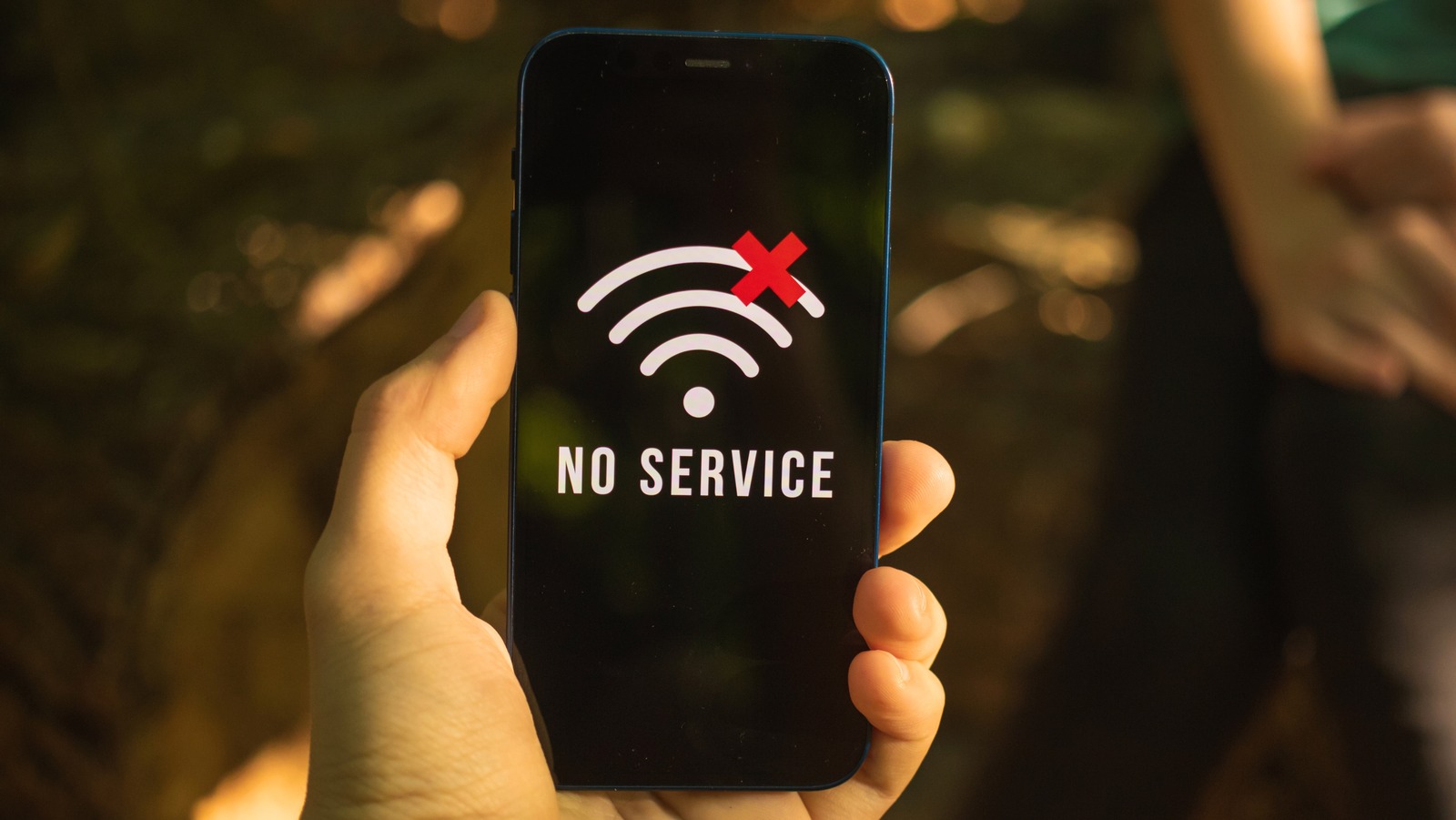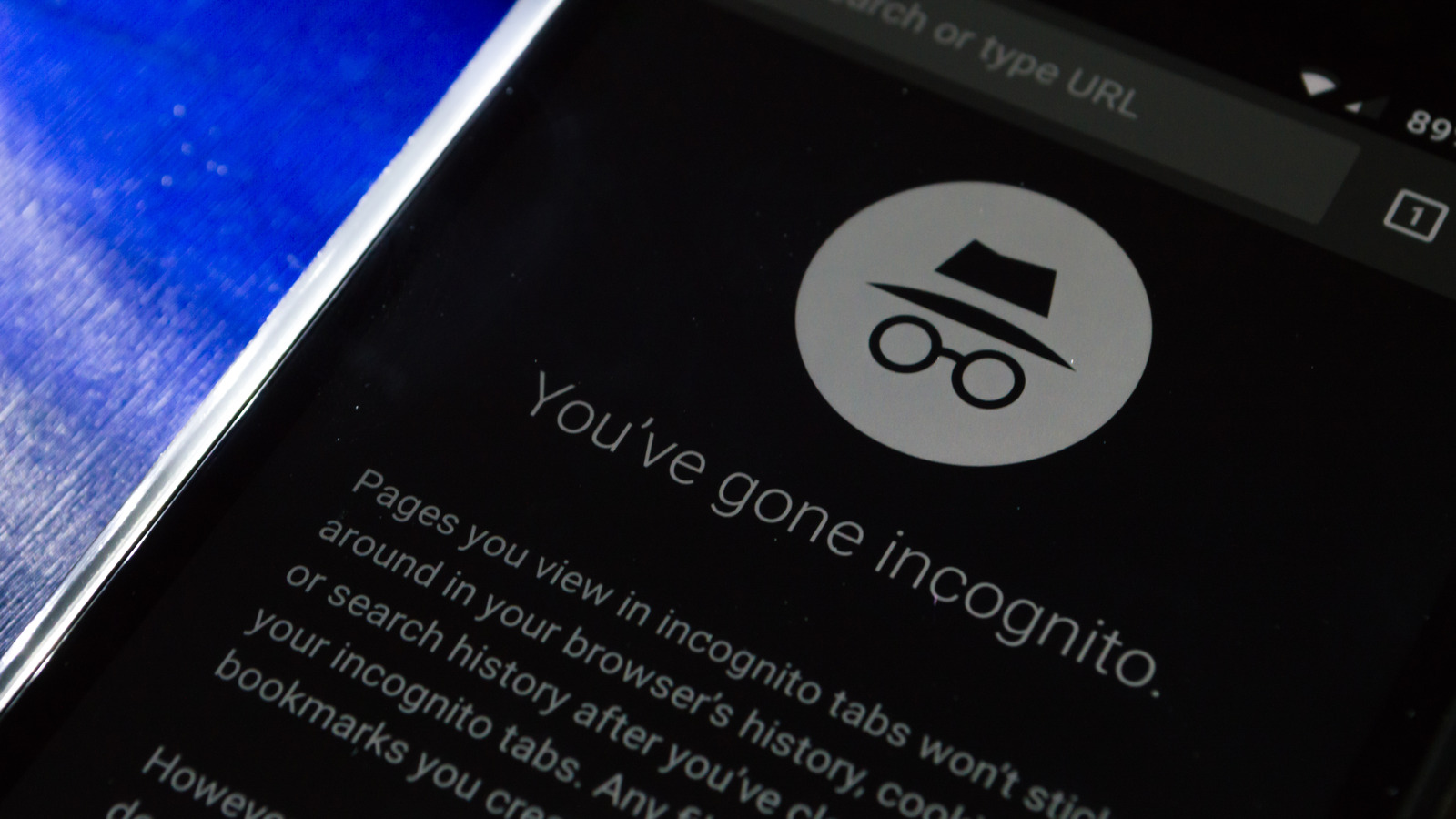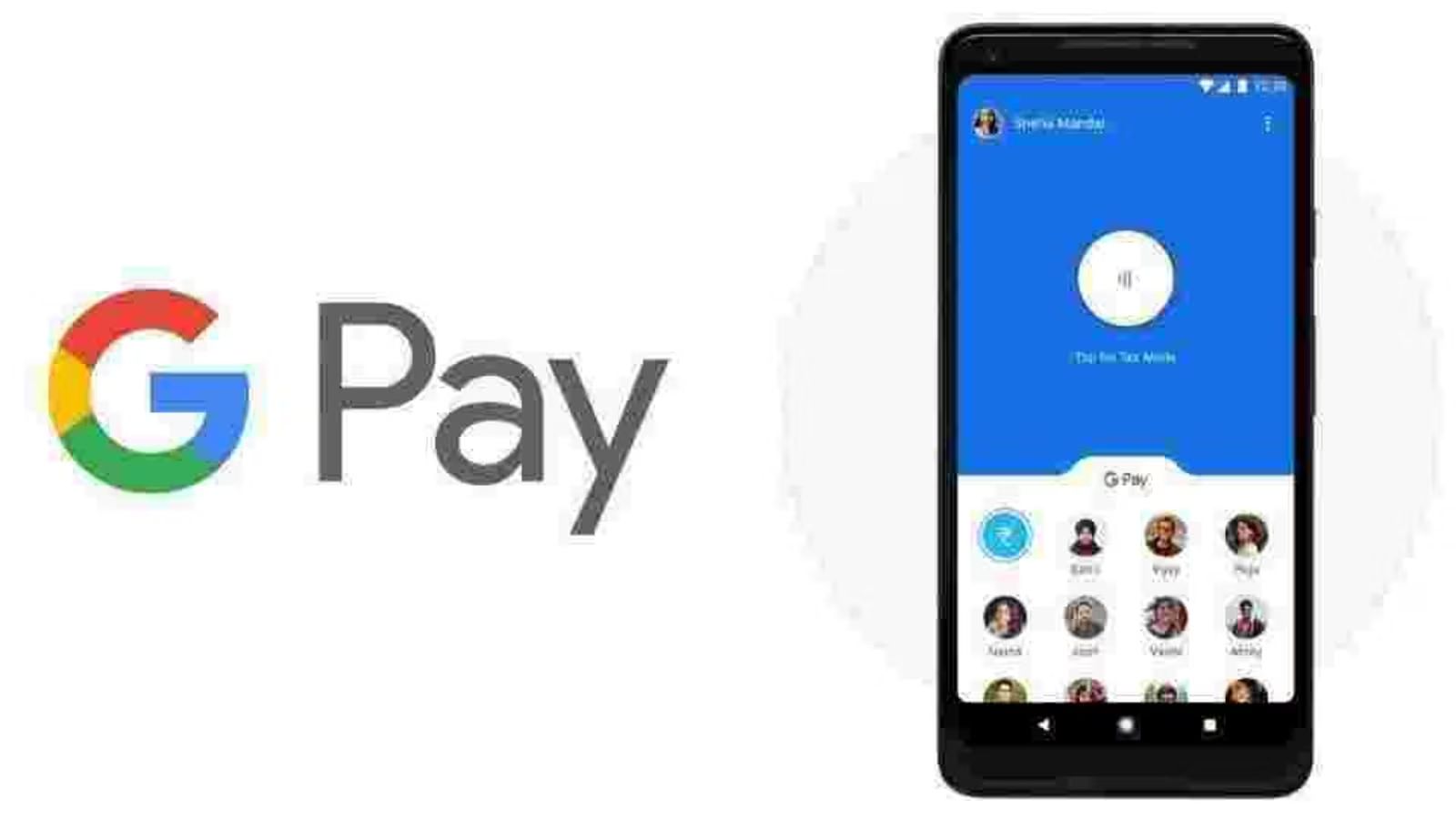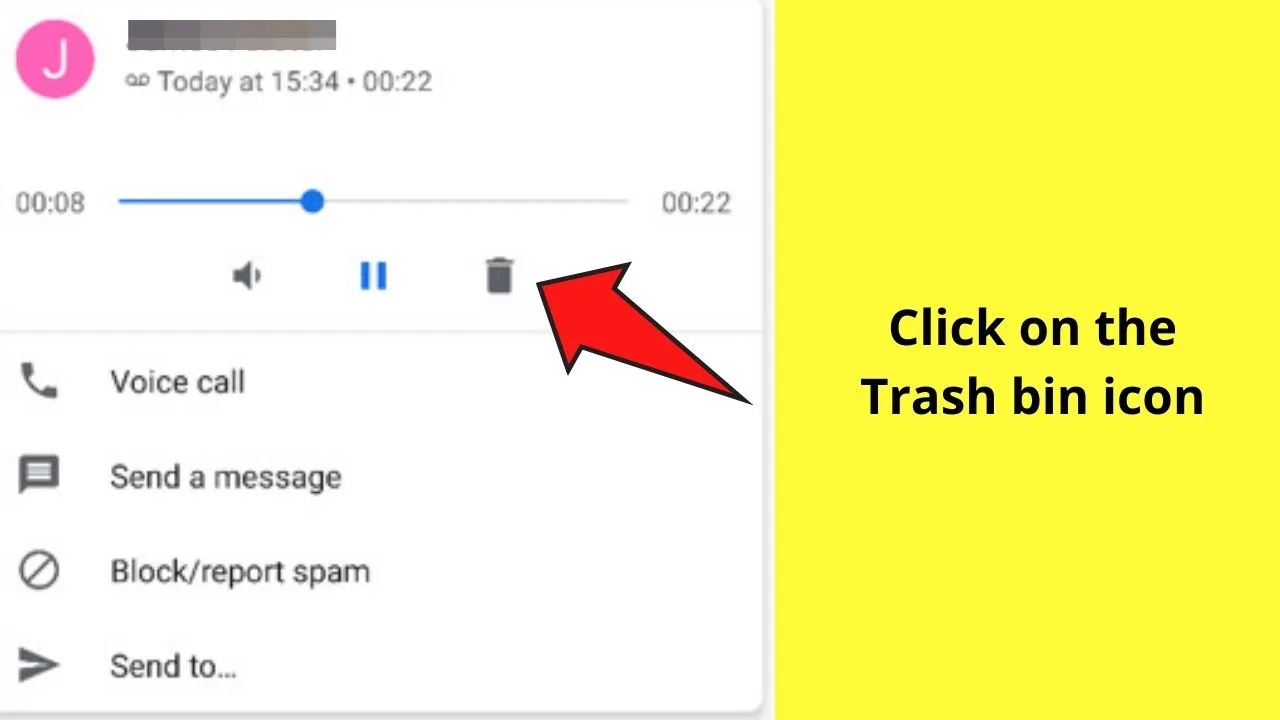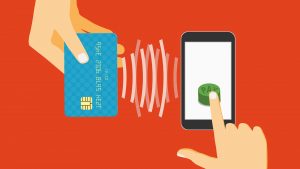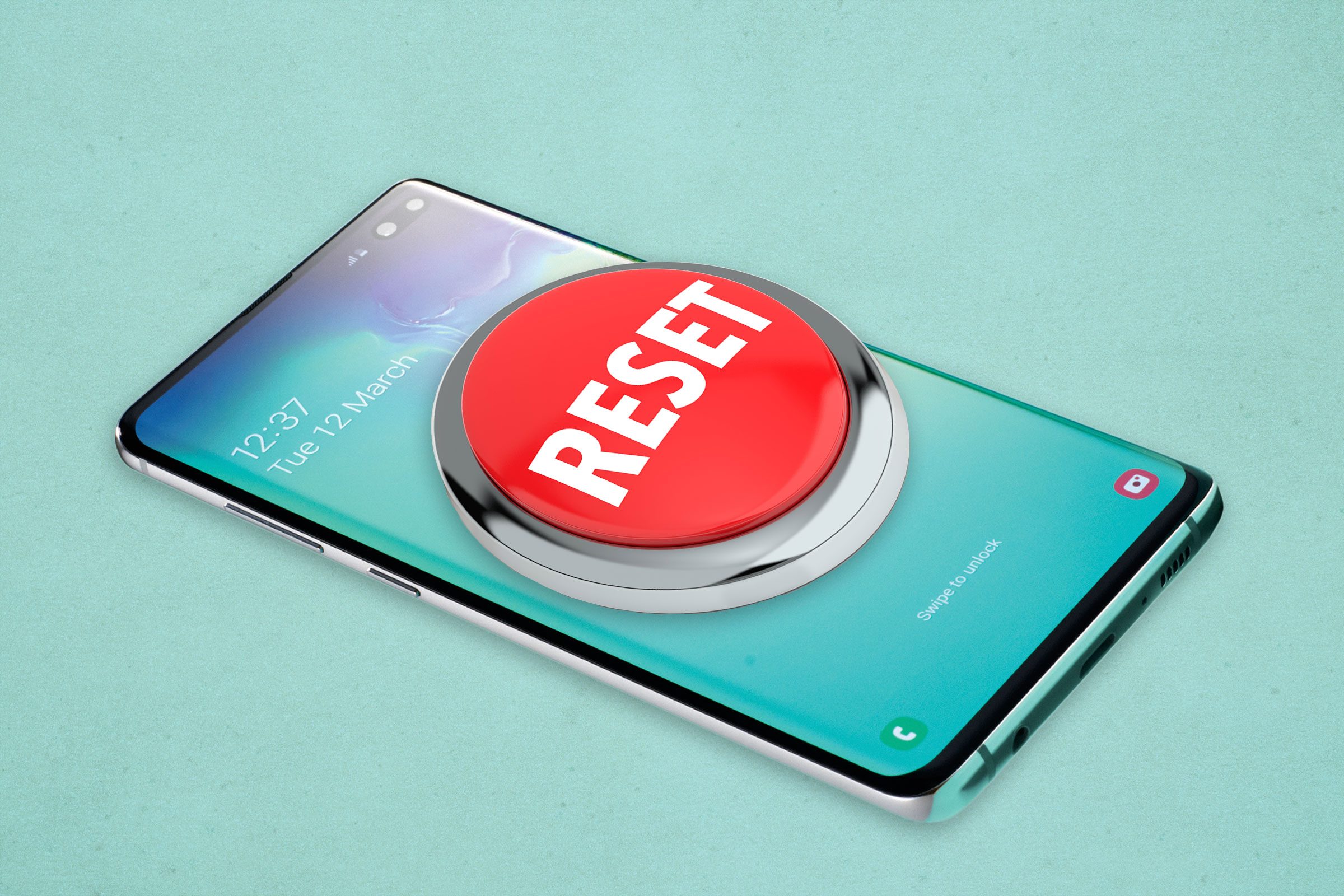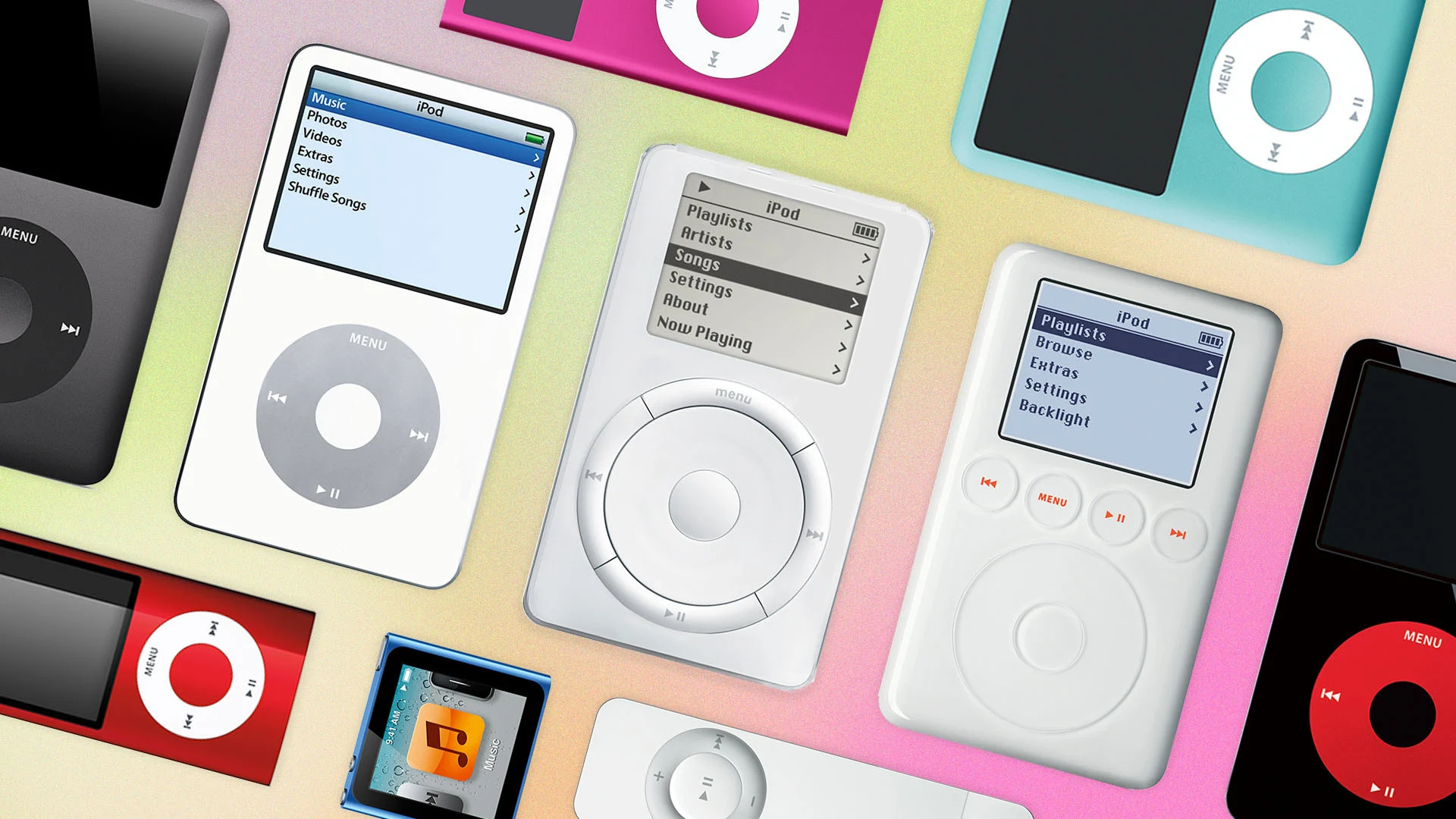Introduction
Welcome to the digital age, where our smartphones have become an essential part of our daily lives. We rely on them for communication, entertainment, and accessing information on the go. So, it can be quite frustrating when your Android phone suddenly displays the dreaded “No Service” message, despite having a service plan and being in an area with coverage. This perplexing issue can leave you feeling disconnected and unable to use your phone for its intended purpose.
But fear not! In this article, we will delve into the reasons behind why your Android phone might display the “No Service” message, as well as explore possible solutions to get your phone back up and running.
Before we dive into troubleshooting, it’s important to understand that the “No Service” message on your Android phone indicates a lack of signal reception from your network provider. This means that your phone is unable to establish a connection to the cellular network, rendering it unable to make calls, send texts, or use mobile data.
There are several reasons why your Android phone might be displaying this frustrating message. It could be due to issues with your SIM card, problems with your network provider, airplane mode being enabled, or even outdated software. In some cases, a faulty or damaged antenna or network congestion in your area could also contribute to the problem.
In the following sections, we will explore each of these potential causes in more detail, along with the necessary troubleshooting steps to fix the “No Service” issue on your Android phone. So, let’s get started and regain your connection to the digital world!
Understanding “No Service” on Android
Before we delve into the possible causes and solutions for the “No Service” issue on your Android phone, let’s take a moment to understand what it actually means.
The “No Service” message on your Android phone indicates that your device is unable to connect to a cellular network. This means that you won’t be able to make or receive phone calls, send or receive text messages, or access the internet using mobile data.
Your Android phone relies on a SIM card, which is a small chip inserted into your device that contains information required to access the cellular network. It authenticates your device and enables communication with the network provider. When your phone displays the “No Service” message, it means that it is unable to establish a successful connection with the network.
There are a few different scenarios in which your Android phone may display the “No Service” message. It could occur when you’re in an area with weak or no network coverage, or it could be a result of issues specific to your device or network provider.
It’s important to note that the “No Service” message is different from being in a “Dead Zone,” where there is absolutely no network coverage. In a Dead Zone, your phone would display “No Signal” or “Emergency Calls Only,” indicating complete unavailability of network service. In contrast, the “No Service” message suggests that you should have service available, but for some reason, your phone is unable to establish a connection with the network.
Now that you have a basic understanding of what the “No Service” message means on your Android phone, let’s explore the possible reasons behind it and the steps you can take to resolve the issue.
Possible Reasons for No Service Issue
The “No Service” issue on your Android phone can be caused by a variety of factors. Understanding these potential reasons will help you identify the root cause and take appropriate steps to resolve the problem. Here are some possible reasons for the “No Service” issue:
- SIM Card Issues: One common cause of the “No Service” issue is a problem with your SIM card. It could be improperly inserted or damaged, preventing your phone from connecting to the cellular network.
- Network Provider Issues: Sometimes, the “No Service” problem can be attributed to temporary network outages or technical issues on the part of your network provider. In such cases, the issue is usually resolved once the provider fixes the problem.
- Airplane Mode Enabled: Accidentally enabling the Airplane Mode on your Android phone can lead to the “No Service” message. This mode disables all wireless connections, including cellular signal.
- Outdated Software: If your Android phone’s software is outdated, it may cause compatibility issues with the network provider’s infrastructure. This can result in signal reception problems and the “No Service” message.
- Faulty or Damaged Antenna: A faulty or damaged antenna in your Android phone can significantly impact signal reception, leading to the “No Service” issue. Physical damage or hardware malfunctions can hinder the antenna’s ability to establish a connection with the network.
- Network Congestion: In areas with heavy network traffic, such as crowded events or high-population density regions, network congestion can cause temporary signal interruptions and result in the “No Service” issue.
These are just a few possible reasons for the “No Service” issue on your Android phone. It’s important to note that the exact cause may vary depending on your specific device, network provider, and location.
In the upcoming sections, we will explore troubleshooting steps to resolve the “No Service” issue, helping you regain connectivity and enjoy the full functionality of your Android phone.
SIM Card Issues
One of the common causes of the “No Service” issue on your Android phone is related to problems with your SIM card. Here are some potential SIM card issues that could lead to the problem:
- Improper Insertion: If the SIM card is not properly inserted into the SIM card slot of your Android phone, it can result in a lack of proper connection with the network, leading to the “No Service” message. Ensure that the SIM card is securely and correctly inserted into the designated slot.
- Damage or Corrosion: Physical damage or corrosion on the SIM card can interfere with its ability to establish a connection. This can occur due to mishandling or exposure to moisture. Inspect your SIM card for any signs of damage or corrosion, and replace it if necessary.
- Wrong SIM Card: Sometimes, using an incompatible SIM card that is not supported by your Android phone or network provider can result in the “No Service” issue. Ensure that you have the correct SIM card that is compatible with your phone and network provider.
To troubleshoot SIM card-related issues, follow these steps:
- Power off your Android phone.
- Remove the SIM card from the SIM card slot using a SIM card removal tool or a paperclip.
- Inspect the SIM card for any visible damage or signs of corrosion. If it appears damaged, consider getting a replacement SIM card from your network provider.
- Carefully reinsert the SIM card into the SIM card slot, ensuring it is properly aligned.
- Power on your Android phone and check if the “No Service” issue is resolved. If not, proceed to the next troubleshooting step.
If resolving SIM card issues doesn’t fix the “No Service” problem on your Android phone, there might be other factors causing the issue. In the following sections, we will explore additional potential causes and troubleshooting steps to get your phone back on track.
Network Provider Issues
When dealing with the “No Service” issue on your Android phone, it’s essential to consider potential problems on the side of your network provider. Here are some network provider-related issues that could cause the problem:
- Temporary Outage: Sometimes, network providers experience temporary outages in specific areas due to network maintenance or technical difficulties. During these outages, your phone may display the “No Service” message. These issues are usually resolved within a short period of time once the network provider resolves the problem.
- Network Coverage: In some cases, you may experience the “No Service” issue if you are in an area with weak or no network coverage. Remote or rural areas and buildings with thick walls can hinder signal reception, resulting in the inability to connect to the network.
- Account Issues: Occasionally, issues with your account or billing can cause disruptions in service. If there are any problems with your account, such as a suspension or overdue payments, your network provider may restrict service until the issue is resolved.
If you suspect that the “No Service” issue is due to network provider-related problems, here are a few steps you can take:
- Contact your network provider’s customer support to inquire about any ongoing network outages or issues in your area. They can provide information on the status of the network and an estimated time for resolution.
- If you are in an area with weak signal coverage, consider moving to another location or going outside to see if the signal strength improves.
- Check your account status to ensure there are no outstanding issues or billing problems. If there are, contact your network provider to resolve them.
- If you have access to another phone on the same network, check if it is experiencing the same “No Service” issue. This can help determine if the problem is specific to your device or network-wide.
If network provider issues are determined to be the cause of the “No Service” issue, you may have to wait for the network provider to resolve the problem or consider switching to an alternative network if signal coverage is consistently poor in your area.
In the next sections, we will explore additional potential causes and troubleshooting steps to help you resolve the “No Service” issue on your Android phone.
Airplane Mode Enabled
One simple but often overlooked reason for the “No Service” issue on your Android phone is the accidental enabling of Airplane Mode. When Airplane Mode is enabled, it disables all wireless connections, including cellular signal, Wi-Fi, and Bluetooth. Here’s how you can check if Airplane Mode is enabled and disable it:
- Swipe down from the top of your Android phone’s screen to access the notification panel.
- Look for the Airplane Mode icon, which resembles an airplane. If the icon is highlighted or shows as turned on, Airplane Mode is enabled.
- Tap the Airplane Mode icon once to disable it. The icon should no longer be highlighted, and your device should be able to connect to the cellular network.
After disabling Airplane Mode, check if the “No Service” issue is resolved. If not, proceed to the next troubleshooting step.
It’s worth mentioning that sometimes Airplane Mode can be accidentally enabled without your knowledge, such as when your phone is in your pocket or bag. So, it’s a good idea to check the Airplane Mode settings if you suddenly experience network connectivity issues.
If disabling Airplane Mode doesn’t fix the “No Service” problem on your Android phone, there might be other factors causing the issue. In the following sections, we will explore additional potential causes and troubleshooting steps to help you regain cellular service.
Outdated Software
An outdated software version on your Android phone can contribute to the “No Service” issue. Software updates often include improvements and bug fixes that are designed to enhance the performance and compatibility of your device with the network provider’s infrastructure.
If your Android phone is running on outdated software, it may struggle to establish a stable connection with the cellular network, leading to the “No Service” message. Here’s how you can check for software updates and ensure your device is up to date:
- Go to the Settings app on your Android phone.
- Scroll down and tap on “Software Update” or “System Updates,” depending on your device.
- Tap on the “Check for Updates” or “Download and Install” option.
- If an update is available, follow the on-screen instructions to download and install it. Make sure your device is connected to a stable Wi-Fi network, and it has sufficient battery power.
- Once the update is installed, restart your device and check if the “No Service” issue is resolved.
Updating your device’s software not only provides fixes for potential network-related issues but also ensures that you have the latest security features, bug fixes, and overall system improvements.
If your Android phone is already running on the latest software version and the “No Service” problem persists, proceed to the next troubleshooting step to explore other potential causes and solutions.
In the upcoming sections, we will continue to investigate the “No Service” issue on your Android phone and provide further troubleshooting steps to help you regain cellular service.
Faulty or Damaged Antenna
A faulty or damaged antenna in your Android phone can significantly impact its ability to receive and maintain a cellular signal. If the antenna is not functioning properly, it can lead to the “No Service” issue.
There are a few reasons why the antenna may become faulty or damaged. It could be due to physical damage, such as dropping the phone or exposure to moisture. Additionally, hardware malfunctions can also contribute to antenna issues.
To determine if the antenna is causing the “No Service” problem, you can try the following troubleshooting steps:
- Restart your Android phone. Sometimes, a simple restart can resolve temporary software glitches that may be affecting the antenna’s performance.
- Check if the “No Service” issue occurs in multiple locations. If you’re only experiencing the problem in one particular area, it may indicate weak signal coverage rather than a faulty antenna.
- Remove any phone cases or accessories that may be obstructing the antenna. In some cases, materials or metal objects surrounding your phone can interfere with the antenna’s ability to receive a strong signal.
- If possible, insert your SIM card into another compatible phone to see if you still experience the “No Service” issue. If the problem persists with a different phone, it suggests that the issue is related to the SIM card or network provider rather than the phone’s antenna.
- If none of the above steps resolve the issue and you suspect a faulty or damaged antenna, it’s recommended to visit an authorized service center or contact your phone’s manufacturer for assistance. They can assess the condition of the antenna and provide necessary repairs or replacements.
Keep in mind that attempting to repair or replace the antenna yourself may void your warranty or result in further damage. Therefore, it’s important to seek professional assistance or follow the manufacturer’s guidelines.
In the next sections, we will explore additional potential causes of the “No Service” issue on your Android phone and provide further troubleshooting steps to help you regain cellular service.
Network Congestion
Another possible cause of the “No Service” issue on your Android phone is network congestion. Network congestion occurs when there is a high volume of users accessing the network simultaneously, leading to decreased signal quality and potential signal drops.
In areas with heavy network traffic, such as crowded events, densely populated cities, or during peak usage times, network congestion can be a common occurrence. This congestion can result in temporary interruptions in signal reception and contribute to the “No Service” problem.
If you suspect that network congestion is causing the issue, follow these steps:
- Move to a different location within the same area, such as stepping outside or moving to a less crowded area. This allows your device to establish a better connection with the cellular network.
- Avoid using your phone in heavily congested areas or during peak usage times if possible. By minimizing your phone’s usage in these situations, you may experience better signal quality.
- Consider switching to a different network provider if network congestion is consistently affecting your ability to make calls, send texts, or use mobile data in your area.
It’s important to note that network congestion is usually a temporary issue and resolves itself once the volume of users accessing the network decreases. However, if you frequently encounter network congestion in your area, switching to a network provider with better infrastructure and handling of network traffic may provide a more reliable connection.
If network congestion is not the cause of the “No Service” issue or if the problem persists even after following the above steps, continue reading the following sections for additional troubleshooting steps to resolve the issue.
Troubleshooting Steps to Fix “No Service”
If your Android phone is experiencing the frustrating “No Service” issue, there are several troubleshooting steps you can take to try and resolve the problem. Here are some effective solutions to consider:
- Restart the Device: Sometimes, a simple restart can fix temporary software glitches that may be causing the “No Service” problem. Power off your device, wait a few seconds, and then power it back on.
- Check SIM Card: Ensure that your SIM card is properly inserted into the SIM card slot of your Android phone. Remove the SIM card and reinsert it, making sure it is correctly aligned and seated securely.
- Check Network Provider Coverage: Verify that you are in an area with adequate network coverage. Use another device or consult your network provider’s coverage maps to confirm that the issue is not due to weak or no signal availability in your location.
- Disable and Enable Airplane Mode: Toggle Airplane Mode on and off to reset the wireless connections on your Android phone. Swipe down from the top of the screen, tap the Airplane Mode icon, wait a few seconds, and then tap it again to turn it off.
- Update Software: Ensure that your Android phone is running on the latest software version. Check for software updates in the settings menu and install any available updates to improve compatibility and resolve potential issues.
- Perform a Network Settings Reset: Resetting the network settings on your Android phone can help resolve network-related problems. Go to the settings menu, locate the “Network settings reset” or “Reset network settings” option, and follow the on-screen prompts to perform the reset.
- Reset the Device to Factory Settings: If all else fails, you can perform a factory reset on your Android phone. Backup your important data and follow the instructions in the settings menu to reset the device to its original factory settings. Be aware that this will erase all data on your phone, so make sure to backup your data beforehand.
It’s important to note that performing a factory reset should be a last resort, as it will remove all data and settings from your device. Make sure to backup your important data before proceeding with a factory reset.
By following these troubleshooting steps, you have a good chance of resolving the “No Service” issue on your Android phone. If none of the above solutions work or if the problem persists, it may be necessary to contact your network provider or seek professional assistance.
Now that you have a range of troubleshooting options at your disposal, it’s time to regain cellular service and enjoy the full functionality of your Android phone once again.
Restart the Device
One of the simplest and most effective troubleshooting steps to fix the “No Service” issue on your Android phone is to restart the device. Oftentimes, a restart can resolve temporary software glitches or conflicts that may be causing the problem.
To restart your device, follow these steps:
- Press and hold the power button on your Android phone until a menu appears on the screen.
- Select the “Restart” or “Reboot” option from the menu.
- Wait for your phone to turn off and then automatically power back on.
After the restart, check if the “No Service” issue is resolved. Sometimes, a simple reboot can reconnect your phone to the cellular network and restore the signal.
If the problem persists after the restart, proceed to the next troubleshooting step to further diagnose and resolve the issue.
Keep in mind that a restart is a temporary solution and may not fix the underlying cause of the “No Service” issue. If the problem persists, it’s important to explore additional troubleshooting steps to identify and address the root cause.
In the upcoming sections, we will continue to explore various troubleshooting steps, providing you with the necessary guidance to resolve the “No Service” issue on your Android phone.
Check SIM Card
A faulty or improperly inserted SIM card can often be the reason behind the “No Service” issue on your Android phone. Checking the SIM card and ensuring it is properly inserted can help to establish a reliable connection with the cellular network.
To check the SIM card on your Android phone, follow these steps:
- Power off your Android phone.
- Locate the SIM card slot, which is usually located on the side or the back of your phone.
- Using a SIM card removal tool or a paperclip, gently push the tool into the small hole beside the SIM card slot to release the tray.
- Remove the SIM card from the tray and inspect it for any visible signs of damage or dirt. Take note of the SIM card’s orientation.
- If the SIM card appears to be in good condition, reinsert it into the tray in the correct orientation.
- Carefully insert the SIM card tray back into the SIM card slot until it clicks into place.
- Power on your Android phone and wait for it to boot up.
After the phone restarts, check if the “No Service” issue is resolved. A proper reinsertion of the SIM card can often establish a stable connection with the network and restore service.
If the problem persists, consider trying the SIM card in another compatible phone to determine if the issue is with the SIM card itself or the phone. If the SIM card works fine in another device, the problem may lie with your Android phone and further troubleshooting steps will be necessary.
However, if the SIM card does not work in a different phone either, it is recommended to contact your network provider to obtain a replacement SIM card.
Continue reading the following sections for additional troubleshooting steps to resolve the “No Service” issue on your Android phone.
Check Network Provider Coverage
One of the factors that can contribute to the “No Service” issue on your Android phone is inadequate network coverage in your area. Before troubleshooting further, it’s important to confirm that your network provider has coverage in the location where you are experiencing the problem.
To check the network coverage provided by your network provider, you can follow these steps:
- Visit the website of your network provider or use their mobile app (if available).
- Look for a coverage map or a tool that allows you to enter your location to check the network coverage in your area.
- Enter your address, city, or ZIP code to see the network coverage details for that specific area.
The coverage map will show you the strength of the network signal in your location, indicating whether it is strong, moderate, or weak. A weak signal in your area can result in poor or no network service.
If the network coverage map indicates weak or no service in your area, the “No Service” issue may be unrelated to your Android phone. In such cases, you can try these steps:
- Move to a different location where the network coverage is better, such as near a window or in an area with fewer obstructions.
- Contact your network provider to report the issue and inquire about any planned maintenance or known network problems in your area.
However, if the network coverage map indicates that your area should have good signal strength and you are still experiencing the “No Service” issue, continue with the troubleshooting steps in the following sections.
In the upcoming sections, we will explore additional potential causes of the “No Service” issue on your Android phone and provide further troubleshooting steps to help you regain cellular service.
Disable and Enable Airplane Mode
Accidentally enabling Airplane Mode on your Android phone can lead to the “No Service” issue. When Airplane Mode is enabled, it disables all wireless connections, including cellular signal, Wi-Fi, and Bluetooth. To resolve the problem, you need to disable and enable Airplane Mode on your device.
Here’s how you can do it:
- Swipe down from the top of your Android phone’s screen to access the notification panel.
- Look for the Airplane Mode icon, which typically resembles an airplane. If the icon is highlighted or shows as turned on, it means Airplane Mode is enabled.
- Tap once on the Airplane Mode icon to disable it. Once disabled, the icon should no longer appear highlighted.
- Wait for a few seconds and then tap the Airplane Mode icon again to enable it.
By toggling the Airplane Mode on and off, you are essentially resetting all wireless connections on your Android phone. This can help resolve any temporary glitches or conflicts that may be causing the “No Service” issue.
After enabling and disabling Airplane Mode, give your phone a few moments to reconnect to the cellular network. Check if the “No Service” issue has been resolved.
If the problem persists, proceed to the next troubleshooting step to further diagnose and fix the issue.
In the subsequent sections, we will delve into other potential causes of the “No Service” issue on your Android phone and provide additional troubleshooting steps to help you regain cellular service.
Update Software
An outdated software version on your Android phone can sometimes lead to the “No Service” issue. Software updates often include bug fixes, performance improvements, and compatibility enhancements that can address network-related problems and improve the overall functionality of your device.
To check for and install software updates on your Android phone, follow these steps:
- Go to the Settings app on your Android phone.
- Scroll down and tap on “System” or “About phone,” depending on your device.
- Look for the “Software update” or “System update” option and select it.
- Tap on “Check for updates” to see if any updates are available for your device.
- If an update is available, follow the on-screen instructions to download and install it. Make sure your phone is connected to a stable Wi-Fi network and has sufficient battery power.
- Once the installation process is complete, restart your phone and check if the “No Service” issue persists.
Updating your Android phone’s software to the latest version can often resolve network-related issues, including the “No Service” problem. It ensures optimal compatibility with the network provider’s infrastructure and may fix any software bugs or glitches that may be causing the issue.
If your phone is already running the latest software version and you continue experiencing the “No Service” issue, proceed to the next troubleshooting step to further diagnose and resolve the problem.
Continue reading the subsequent sections for additional troubleshooting steps designed to help you regain cellular service on your Android phone.
Perform a Network Settings Reset
If you’re still encountering the “No Service” issue on your Android phone, performing a network settings reset can help resolve any network-related configuration problems that may be causing the issue. This reset will restore the network settings on your device to their default values, giving you a fresh start in establishing a stable connection.
To perform a network settings reset on your Android phone, follow these steps:
- Open the Settings app on your Android phone.
- Scroll down and tap on “System” or “General Management”, depending on your device.
- Look for the “Reset” or “Reset Options” option and select it.
- Tap on “Reset Network Settings” or a similar option.
- Enter your device’s passcode or pattern if prompted to verify your identity.
- Confirm the action to reset the network settings.
- Once the reset is complete, restart your phone and check if the “No Service” issue has been resolved.
It’s important to note that performing a network settings reset will remove saved Wi-Fi networks, Bluetooth pairings, and any custom network configurations on your Android phone. You will need to reconnect to Wi-Fi networks and re-pair Bluetooth devices after the reset.
If the “No Service” problem persists after the network settings reset, proceed to the next troubleshooting step to explore additional solutions.
In the following sections, we will continue to investigate the “No Service” issue on your Android phone and provide further troubleshooting steps to help you regain cellular service.
Reset the Device to Factory Settings
If all previous troubleshooting steps have failed to resolve the “No Service” issue on your Android phone, performing a factory reset may be the next course of action. Resetting your device to factory settings erases all data and settings from your phone and restores it to its original state.
Please note that a factory reset should be a last resort, as it removes all personal data and customized settings from your device. Before proceeding, make sure to back up any important data and take note of any settings or configurations that you may want to restore later.
To perform a factory reset on your Android phone, follow these steps:
- Open the Settings app on your Android phone.
- Scroll down and tap on “System” or “General Management”, depending on your device.
- Select the “Reset” or “Reset Options” option.
- Tap on “Factory Data Reset” or a similar option.
- Read the information regarding the reset process and the impact it will have on your device.
- If necessary, enter your device’s passcode, pattern, or PIN to verify your identity.
- Confirm the action to reset the device to factory settings.
- Wait for the reset process to complete, and your phone will reboot.
After the factory reset, your Android phone will be restored to its original state, as if it were just out of the box. You will need to go through the initial setup process again and reinstall apps and restore data from your backup.
Performing a factory reset can eliminate any software-related issues that may be causing the “No Service” problem. However, if the issue persists even after a factory reset, it is recommended to contact your phone manufacturer’s support or your network provider for further assistance.
Now that you have explored various troubleshooting steps, it’s time to regain cellular service and enjoy the full functionality of your Android phone once again.
Conclusion
The “No Service” issue on your Android phone can be a frustrating problem that leaves you feeling disconnected and unable to use the full functionality of your device. However, by understanding the possible causes and implementing the appropriate troubleshooting steps, you can regain cellular service and resolve the issue.
In this article, we explored various potential reasons for the “No Service” problem, including SIM card issues, network provider problems, enabled Airplane Mode, outdated software, faulty antennas, network congestion, and more. We provided step-by-step instructions for each troubleshooting step, such as restarting the device, checking the SIM card, verifying network provider coverage, disabling and enabling Airplane Mode, updating the software, performing a network settings reset, and as a last resort, resetting the device to factory settings.
It’s important to note that the specific cause of the “No Service” issue may vary from one situation to another. It is recommended to follow the troubleshooting steps in the order presented, testing the phone after each step to check if the problem is resolved.
If these troubleshooting steps fail to resolve the “No Service” issue, it may be necessary to contact your network provider or phone manufacturer for further assistance. They can provide more specialized guidance tailored to your specific device and network configuration.
Remember to always back up your important data before performing any major troubleshooting steps, especially before a factory reset, as it will erase all data from your phone.
We hope that this guide has helped you regain cellular service on your Android phone and eliminated the “No Service” issue. Stay connected and enjoy the full capabilities of your device!







